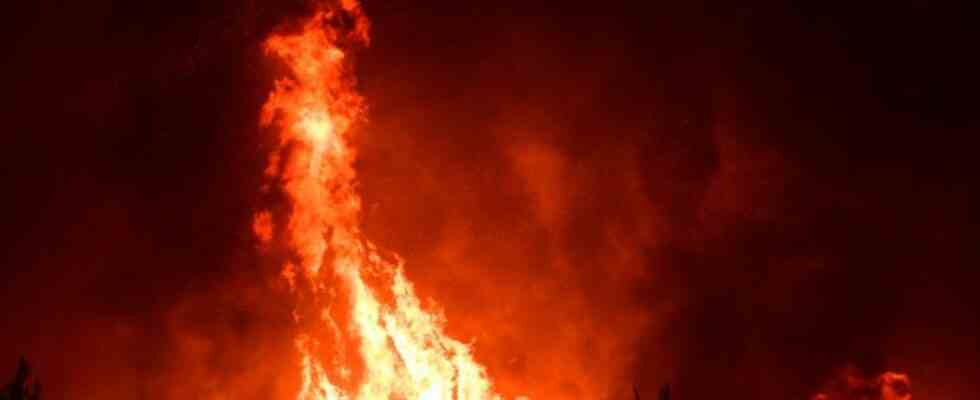disasters
Fueled by climate change: extreme weather in the northern hemisphere
Flames burn through a forest near the village of Galatsona on the island of Euboea, some 188 kilometers north of Athens. photo
© Michael Varaklas/AP/dpa
The summer of 2022 is likely to have been unprecedented in extreme weather across much of the northern hemisphere. There is no doubt that climate change is contributing to this. Is this the new normal?
Sure, there have been severe droughts in Europe, such as in 1976, when fields dried up completely. Or great heat like 2003 with at least 70,000 additional deaths. But the summer of 2022 stands out because, according to preliminary assessments, huge regions were affected for a particularly long time. “It was very unusual,” says Omar Baddour, head of the Climate Monitoring department at the World Weather Organization (WMO) in Geneva. “Nearly a third of the northern hemisphere was affected.”
In many places, three types of severe droughts occurred simultaneously: the meteorological drought with less rainfall, the agricultural drought with parched soil, and the hydrological drought with low levels in rivers, wells and lakes. They are related, but rarely occur so massively at the same time.
“It’s possible for this combination to occur, but the scale is impressive and seems very unusual,” says Baddour. One has to go through historical weather records to look for comparisons, but it has probably only happened once or twice, if ever, since records began.
What happened worldwide?
From Southeast Asia to China, the USA, Africa and Europe: Heat and drought records have been set everywhere and forests have burned down in regions that are otherwise cooler and have hardly any risk of forest fires. Millions of people are affected: fields wither and harvests fail, drinking water has become scarce in some places. Almost everywhere it is said: It has never been so hot for so long. Germany experienced the sunniest, but also one of the warmest and driest summers. There are also devastating floods in parts of Pakistan and the Sahel.
“Weather extremes have always existed,” says Baddour of the WMO. “But it is clear that climate change will make them more frequent and more intense.” Natural climate variability does exist, as science emphasizes. But the consequences of climate change can be determined more and more precisely. The World Weather Attribution network led by the German climatologist Friederike Otto at Imperial College in London is a leader in this so-called attribution research.
Her team studied the spring heat wave in northern India and southern Pakistan using the latest climate models. Heat waves have always existed there, but the team concludes that climate change has made such weather 30 times more likely. Weather refers to the state of the atmosphere at a specific location at a specific point in time, while climate describes typical conditions over a period of decades.
Even an event like the July heat in Britain, with peaks of more than 40 degrees, would have been four degrees cooler without global warming since the industrial revolution, according to the network. The team is currently investigating the entire extreme summer of 2022. The results are not yet available.
What are planetary waves?
Climate change not only leads to higher average temperatures, but also alters the circulation patterns of the air currents in the atmosphere that affect the weather. “The engine of the circulation is the temperature difference between the cold polar air and the warm air in the equatorial region,” says Baddour. Because the polar regions have gotten warmer, the temperature difference is smaller and the engine is weaker as a result. This influences the typical so-called planetary waves. The waves move less, says Baddour, and that’s why the weather conditions sometimes last for weeks – like the heat of 2022 in Europe.
Whether next summer will be like this one cannot be predicted. Floods in Europe are also conceivable if the circulation of air currents changes to a different pattern that favors extreme rain, says Baddour.

